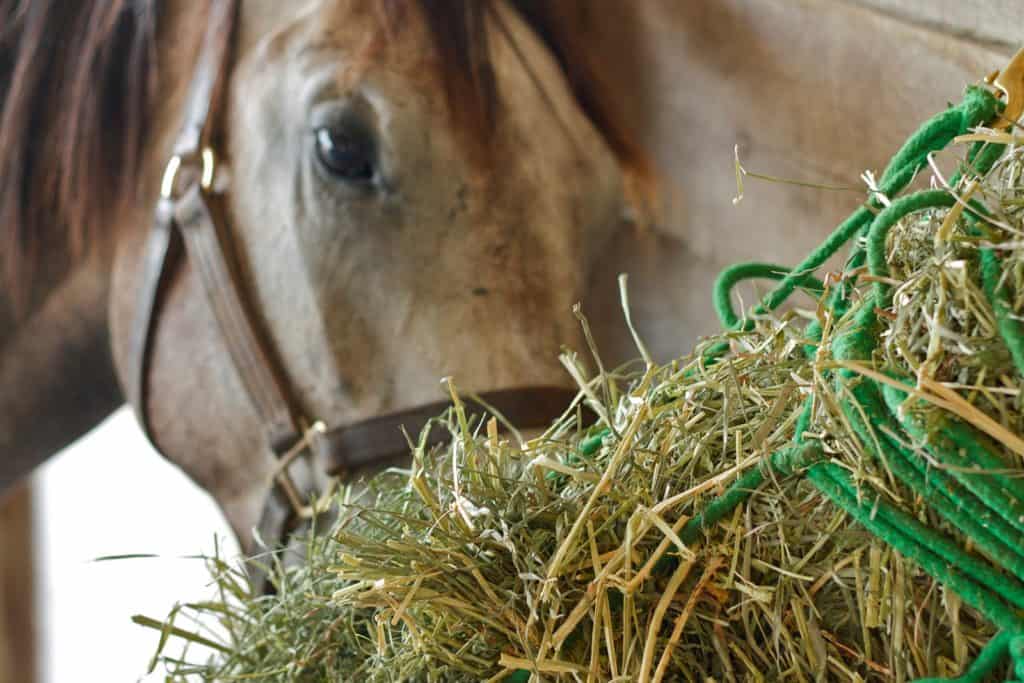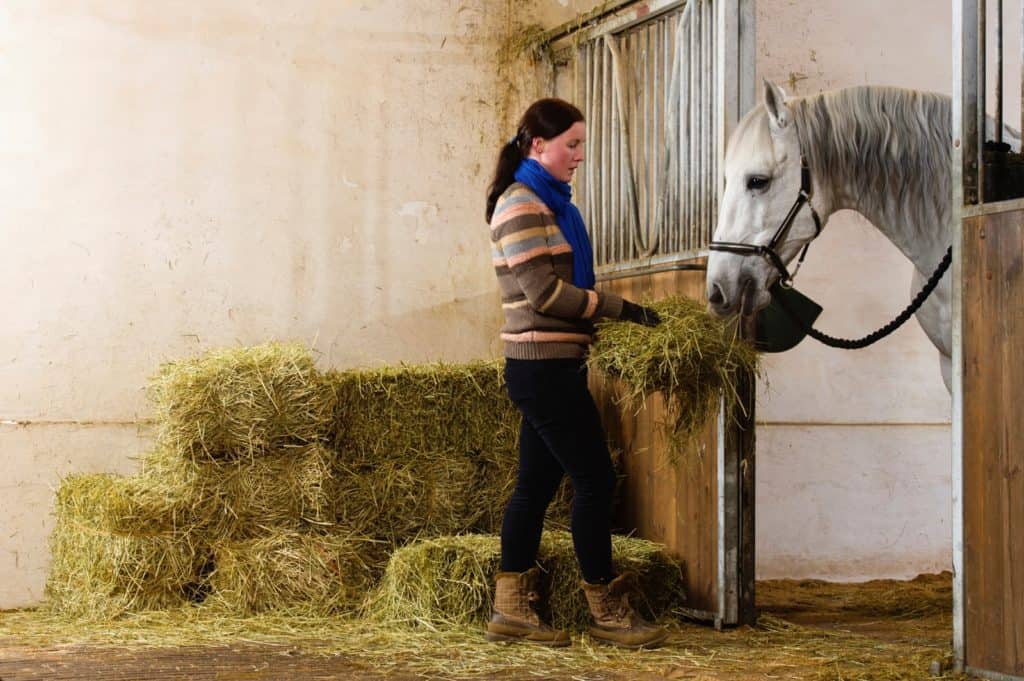
It’s Haymaking Season
Now is the optimal time for Kentucky forage producers to cut hay to ensure they get good quality and yield.

Now is the optimal time for Kentucky forage producers to cut hay to ensure they get good quality and yield.

These harmful toxins produced by molds and fungi could be lurking in your horse’s feed and forage.

Are you confused about equine nutrition? Learn how to feed your horse in our step-by-step visual guide.

The most common way adult horses contract the disease is by eating feed, such as hay or grain, that contains animal remains.

Download and print these feed and turnout information cards for your horse’s stall or barn!

Blister Beetles naturally contain and secrete a chemical substance called cantharidin, which is extremely toxic to horses. Dr. Sarah Reuss lists the dangers of blister beetles and what horse owners can do to prevent their horse from ingesting them.

Soaking hay provides owners with the ability to alter some physical characteristics as well as the nutrient content of their hay if purchasing the ideal hay is not a feasible option.

Does feeding a large amount of hay to a group of horses on winter pasture affect their digestion and health?

Carol Clark, DVM, Dipl. ACVIM, shares her picks for the top equine medicine studies of 2013.

Understanding the horse’s digestion process can help you better manage factors that could cause colic.

Get tips from a veterinarian on keeping horses healthy and safe during the cold days of winter.

Brush up on your hay feeder knowledge with these 10 research-based tidbits.
Presentation topics will include body condition scoring, feeding Cushingoid horses, hay, and more.

With freezing temperatures comes the need for extra care and attention for horses and other equids.

Maintaining a healthy weight and diet is just as important for our horses as it is for us.

Researchers found that steaming appears to increase horses’ consumption of good-quality hay.
Stay on top of the most recent Horse Health news with
"*" indicates required fields